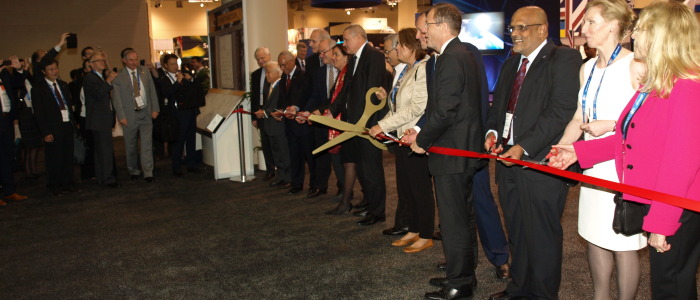IAF Congress 2014
The field of communication, meteorology, environmental monitoring and positioning now completely depend on the services space provides, and more and more fields will truly follow. Basic space research is the common denominator for all other research and applications. Sometimes such research seems useless; however, it is very groundbreaking and continuously pushes the technology forward.
Most of the lectures at the conference were of a very high scientific level, but there were also lectures of interest for the non-professionals. The result of the traditional plenary discussions between heads of the largest agencies showed that the recent year was indeed a year of great successes and without much retrogression, in spite of some unsuccessful launches, as well as the fact that some satellites did not reach their planned operational goal.
The main plenary discussion this year revolved around, without a doubt, two of the largest contributors to the space activities, Russia and China, something that possibly signals the end to an era of long-term cooperation within the space community.
Secure the Recruiting
To secure the recruiting and attract the best heads is of high priority for all of the agencies, also reflected on this year’s IAF congresses, with its own student- and young professionals’ events. This year’s events covered activities such as the plenary discussion where all leaders of the main agencies participated. That all the leaders participate in such a discussion shows that recruiting is of the utmost importance for all agencies.
The International Project Management Committee (IPMC) arranged the annual Young Professional Workshop during the conference. This year’s topics included mentorships, exchange opportunities, project organisation methodology, promotion of exchange and networking between young professionals and challenges facing the next generations. About fifty young professionals participated in the workshop.
However, this is only the top of the education programmes for the space agencies. Many agencies provide education from primary schools and onwards, seeking to catch the interest of young learners with an interest in natural science. Later, the education programmes become more concrete and already in secondary school, the pupils can participate in education programmes pointed toward natural science. Hopefully, this will lead to further university studies and ultimately, the goal is to find the best heads and lead them to the space community.
Space Debris an Increasing Problem
Another subject highly prioritised, is the increasing amount of debris in low earth orbits. Through years of focus on the increasing problems, few effective initiatives have been made. True, there are guidelines to secure re-entry to the atmosphere during maximum 25 years. These, or similar restrictions, have been implemented on most of the satellite operators, however, not with the desired effect. A new problem is the increasing use of very small satellites. These satellites are mainly co-passengers for larger missions, and are deployed in much higher orbits than necessary. Most of these small satellites have neither passive nor active re-entry remedies and will be in orbit for much longer than the desired 25 years. Collisions between objects in space, that sometimes occur, will in most cases cause more debris, causing an increasing amount of objects in the most used orbits. Only very strict regulations, and a definite will to honour those regulations will prove enough to stop the pollution. Stopping further pollution, possibly by using active instruments for sampling dead rubbish and the natural deorbiting of objects, may provide a clean space again in the future.
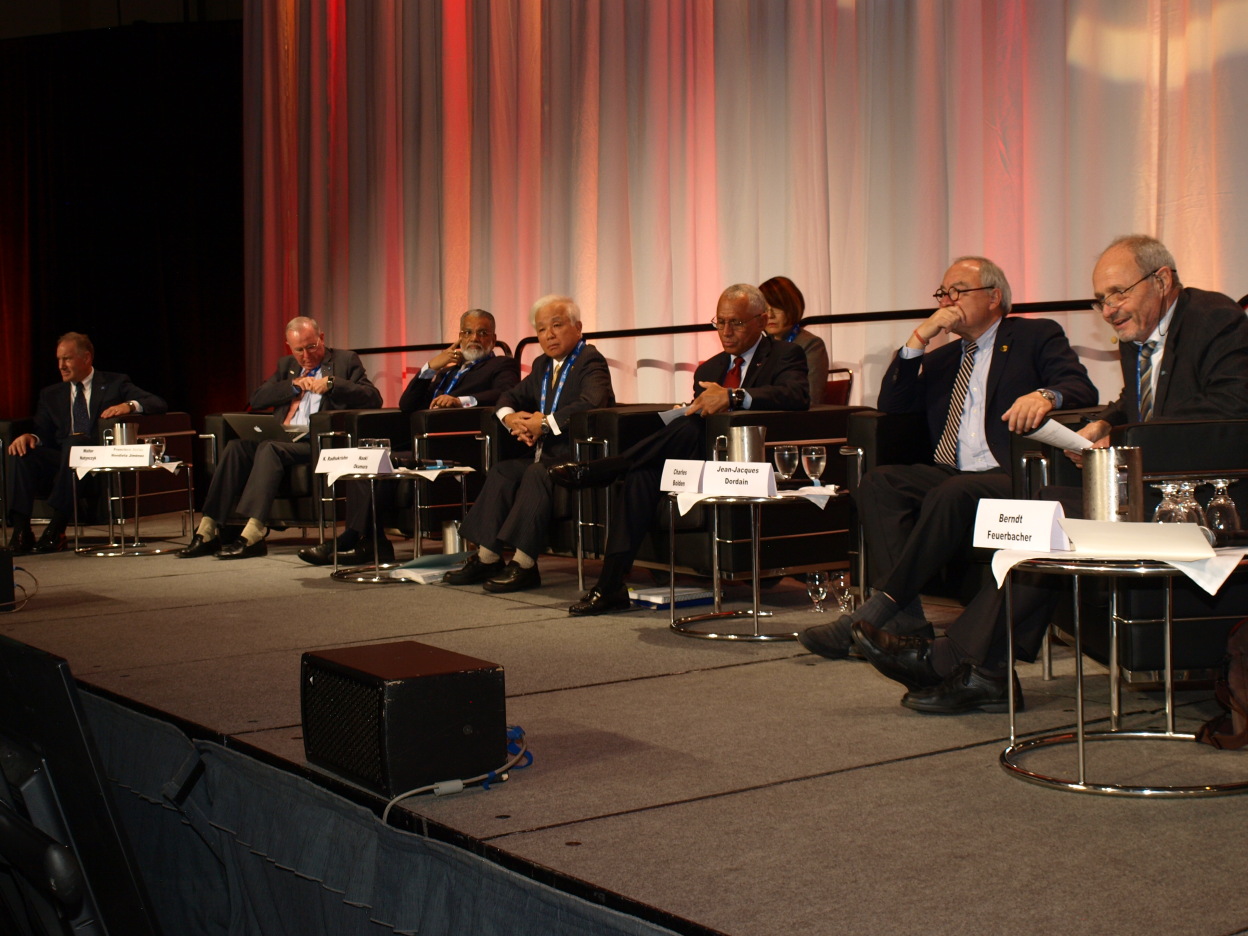
The plenary discussion
The introducing Plenary Programme featuring most of the world’s prominent heads of space. From the left Walter Natynczyk, President, Canadian Space Agency (CSA), Francisco Javier Mendieta Jiménez, Mexican Space Agency (AEM). K. Radhakrishnan, Indian Space Research Organization (ISRO), Naoki Okumura, Japan Aerospace Exploration Agency (JAXA), Charles Bolden, NASA and Jean-Jacques Dordain, ESA together with the moderator Berndt Feuerbacher.
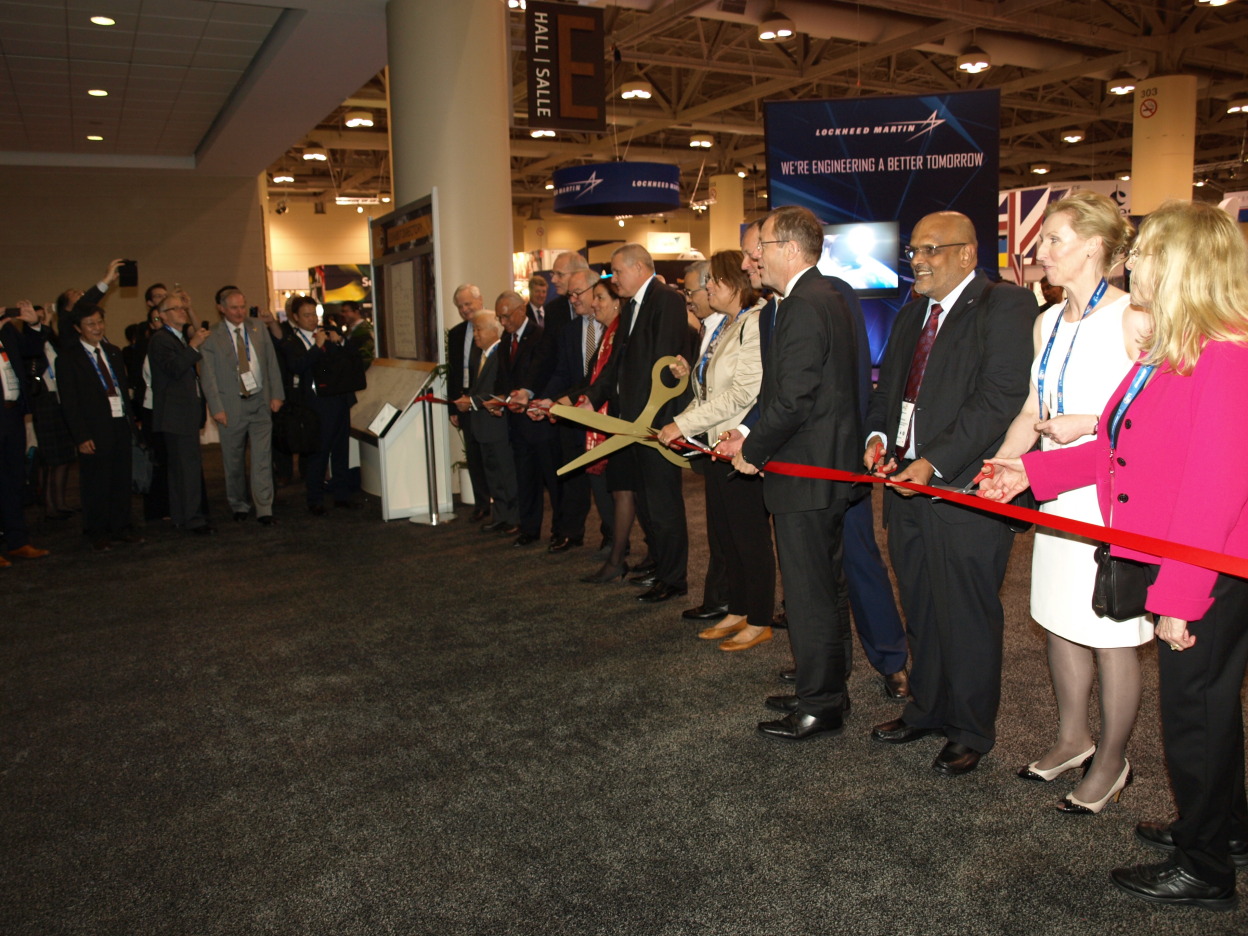
Opening the exhibition
Opening the exhibition. The current leader of the International Astronautical Federation, Kiyoshi Higuchi, holding the large shears, assisted by a number of well-known leaders from the space community.
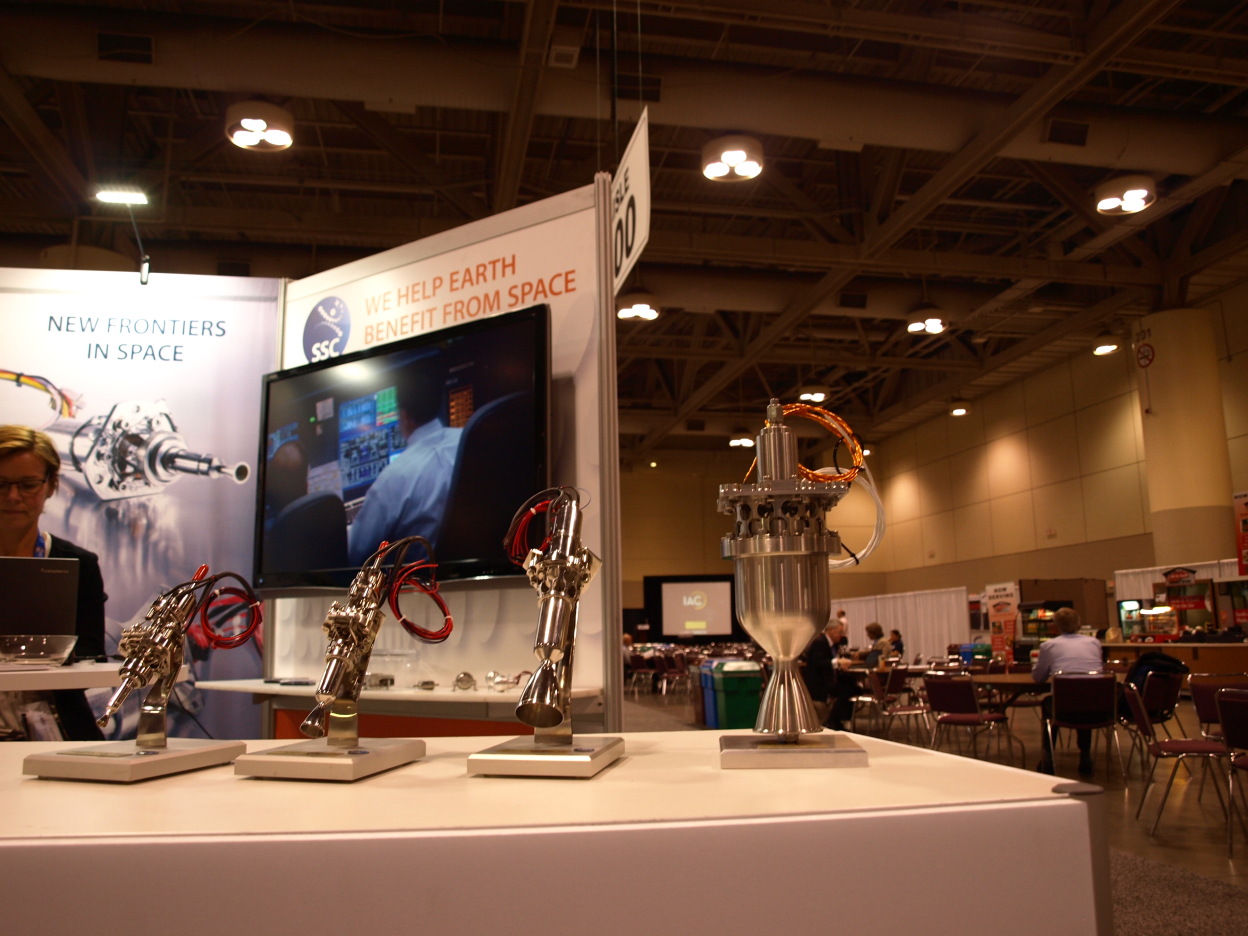
SSC group ECAPS’s High Performance Green Propulsion Thrusters
The Swedish SSC group’s ECAPS showed their family of the High Performance Green Propulsion thrusters. The family consists of six different types of thrusters, from the flight proven 1N thruster to the 220N thruster, still in the developing phase. The environmental friendly thrusters had the commercial breakthrough this year supplying the Skybox satellites with twelve complete 1kN propulsion
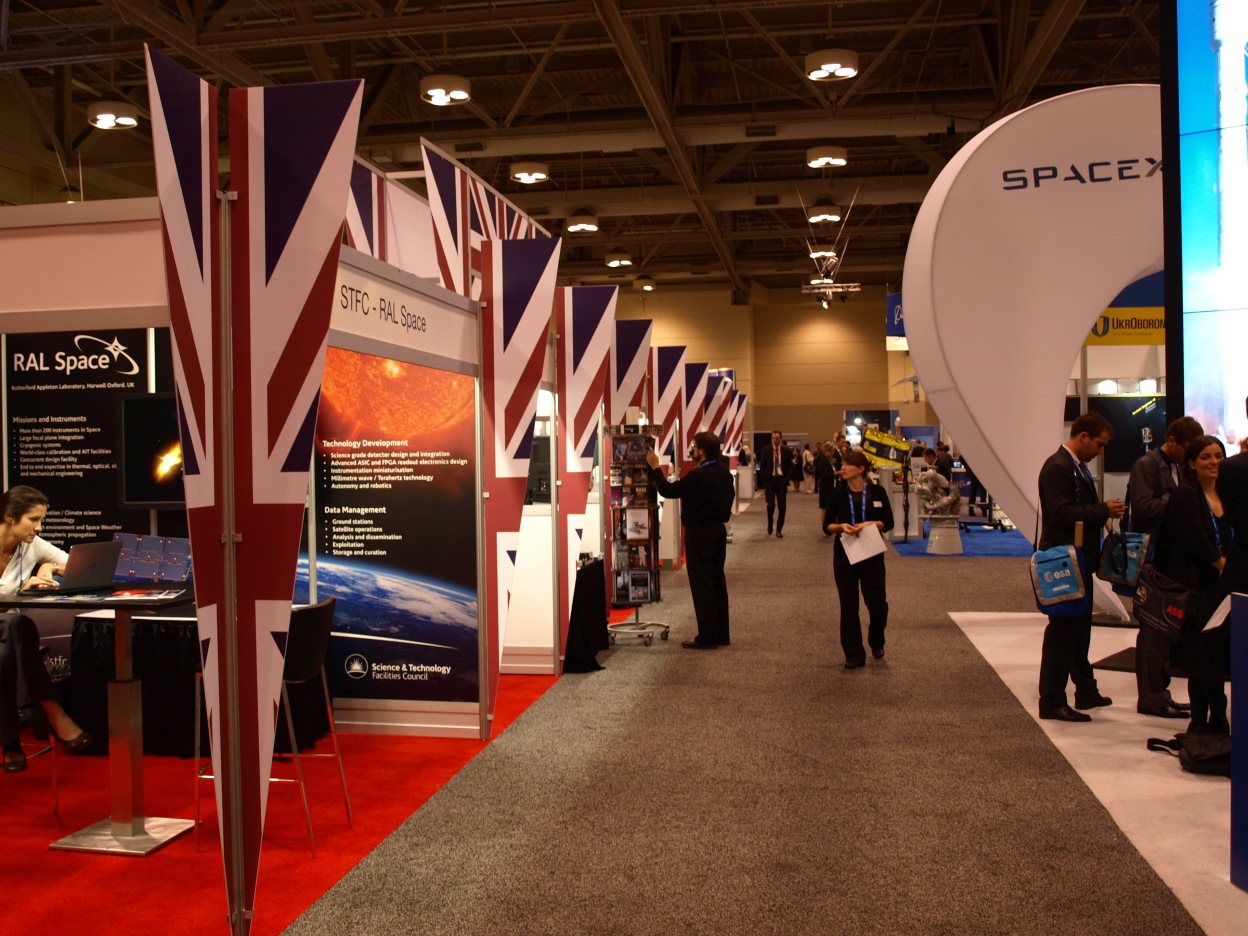
Great Britain at the exhibition
Great Britain, after having been relatively absent from the space community for a number of years, is now one of the large contributors to the European space activities. At the exhibition, they occupied an entire row by themselves.
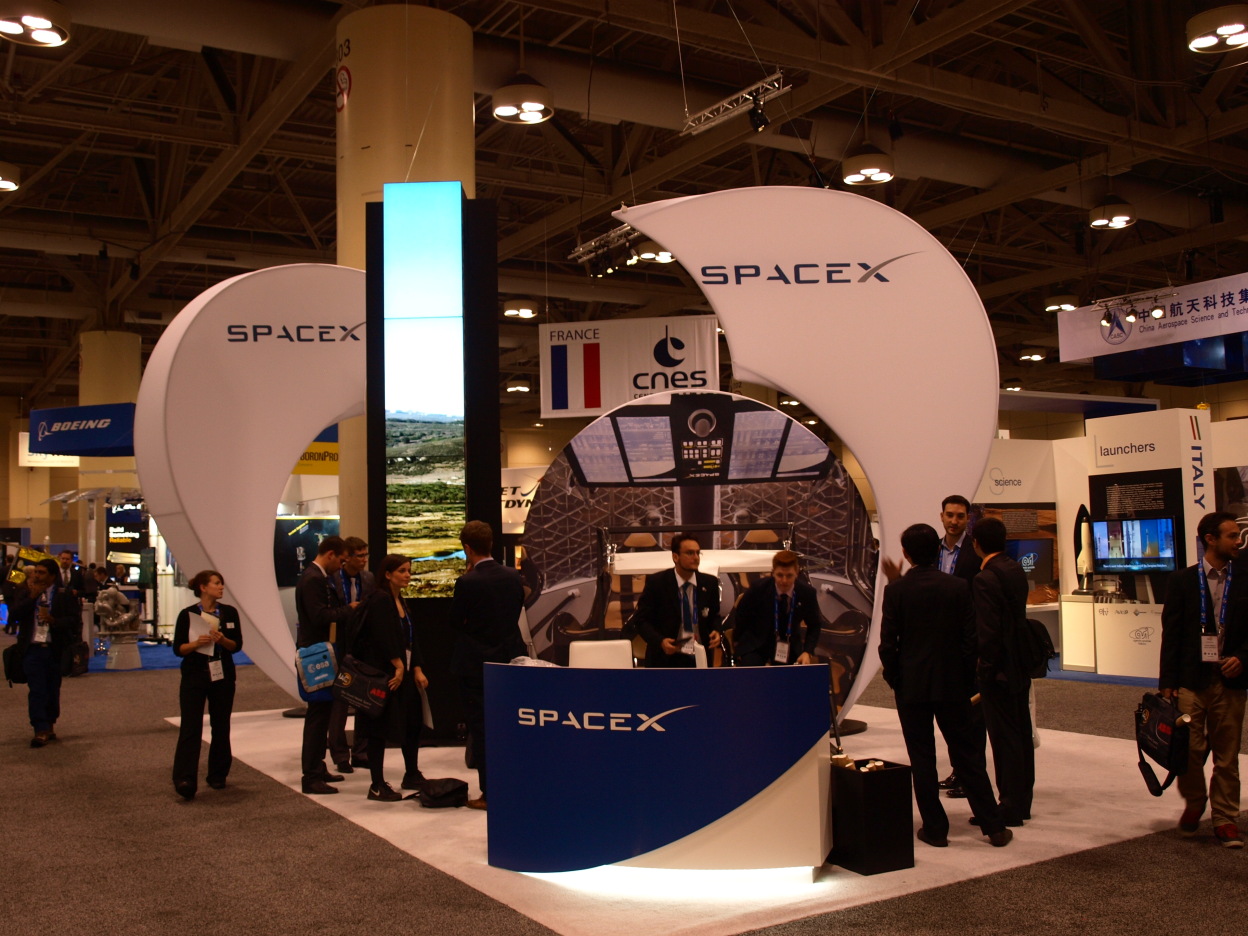
SpaceX.
SpaceX, or Space Exploration Technologies Corp., a launch provider with great success in the commercial launching area. Their effective and low cost launchers challenges both the well-established western launch providers as well as the low cost operators from the eastern countries.
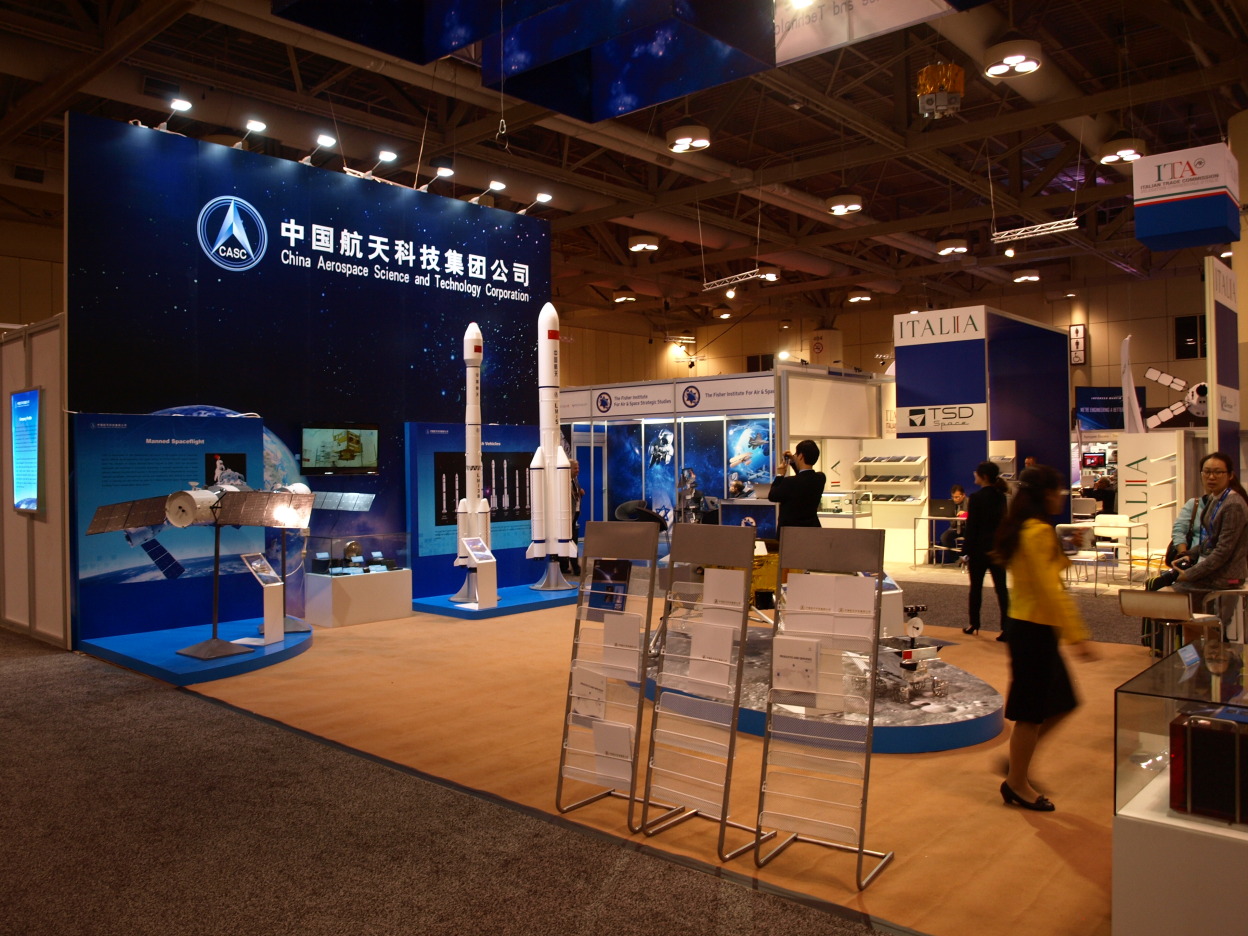
China Aerospace Science and Technology Corporation
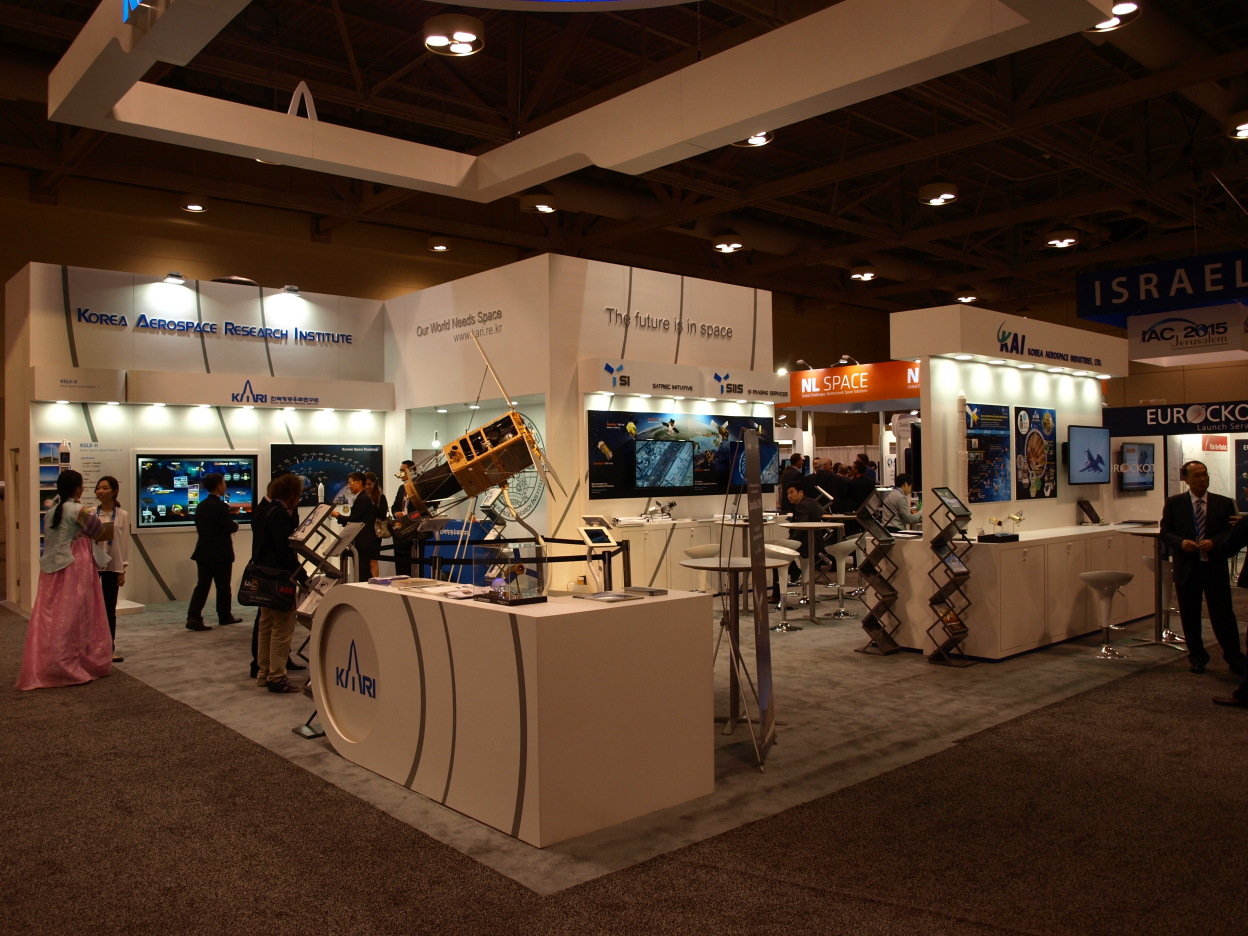
Korean Aerospace Research Institute.
The eastern countries, here represented by the Korean and the Chinese stands, were quite visible at the conference, not only at the exhibition, but also with a large numbers of lectures and poster presentations. Together with India, Japan and other eastern countries they challenge the traditional space community with high activity and advanced technology.
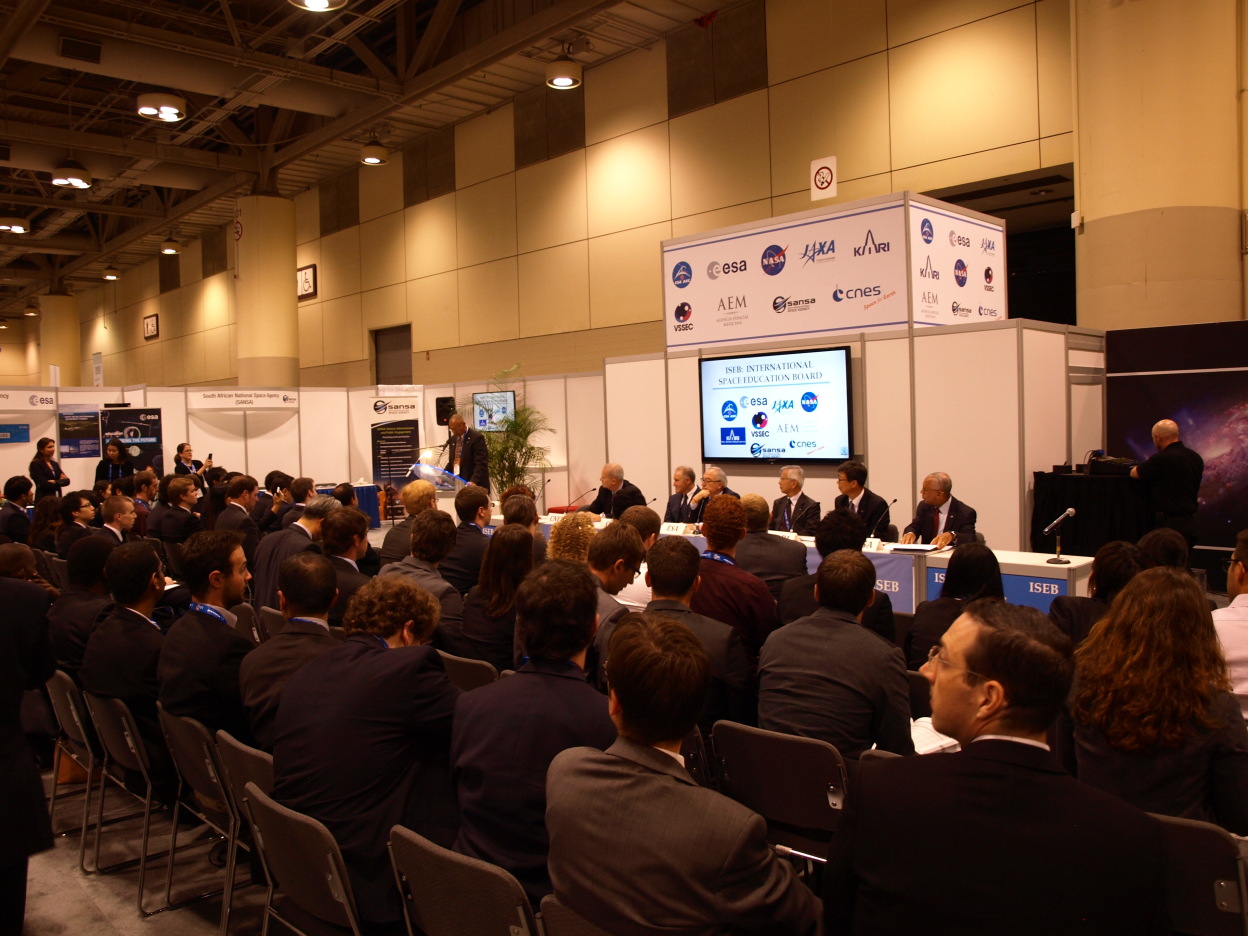
Question and answers session in the International Student Zone.
Recruiting is one of the prioritised tasks for all space organisations. To capture the best heads is necessary to holding and maintaining a leading position within research and developing. Thus, the students had their own Student Zone where all the main organisations had their own stands. The important activity was also underlined with the facts that all of the space agencies used their top leaders in a presentation for students and young scientists.
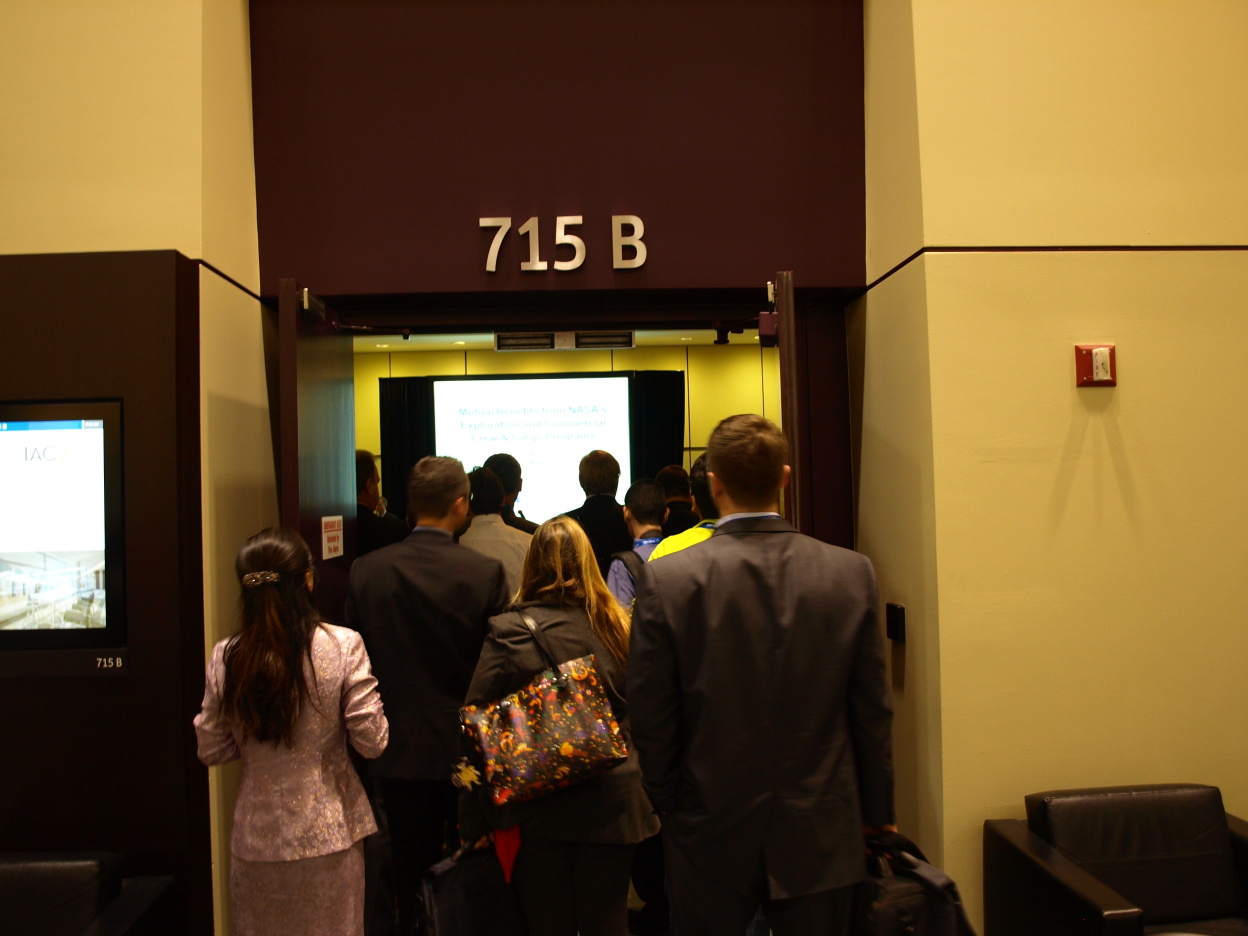
Not the best place for interested listeners.
Some of the presentations were very attractive and gathered more listeners than the hall could hold, and standing in line and queuing seemed the only possibility.


